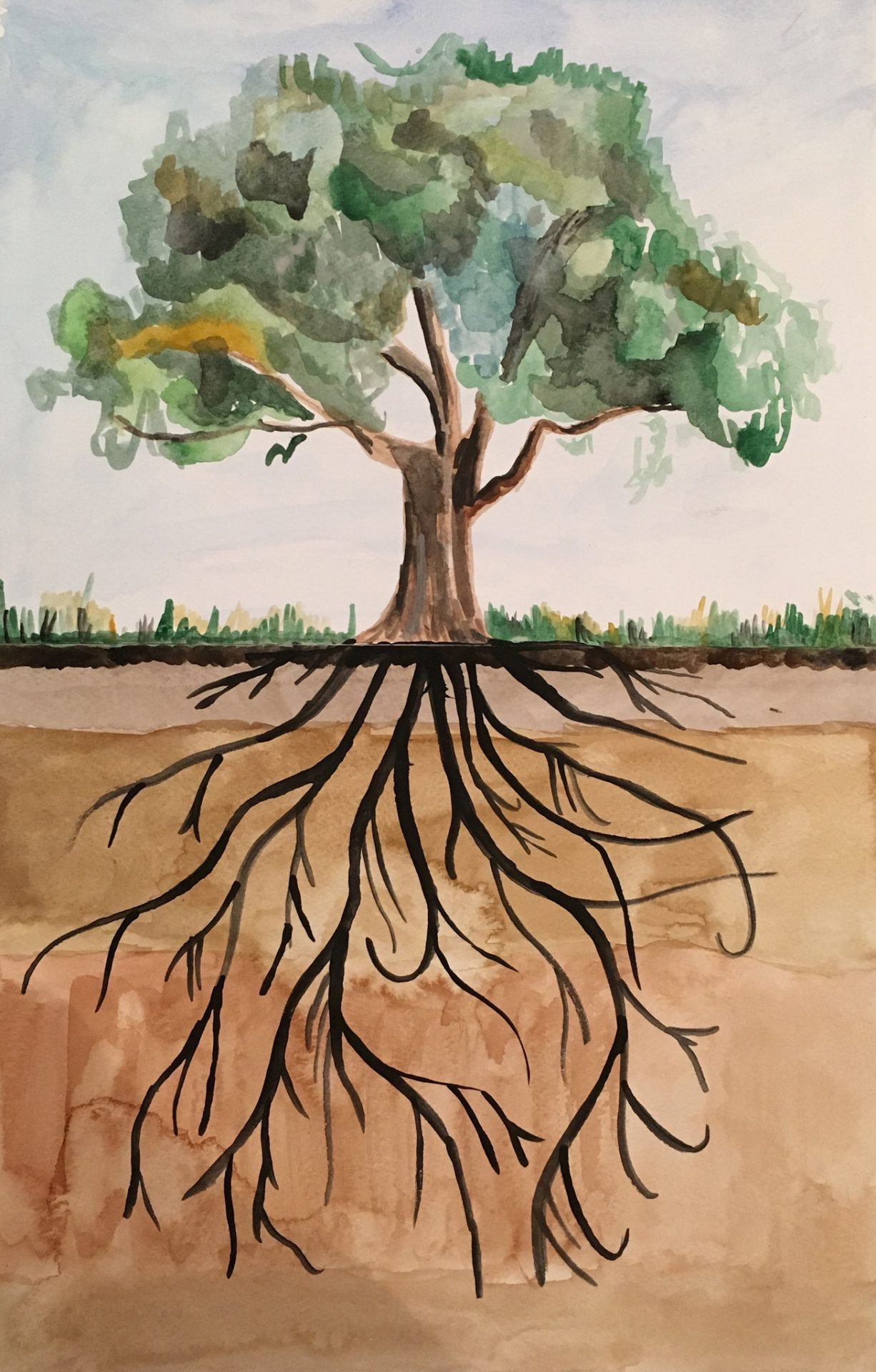Think Like a Tree
The benefits I discovered from practicing mindfulness inspired me to look into other awareness techniques. I began keeping a list of things I was grateful for – adding three things every day. Such a simple practice has impacted my resilience markedly – it has helped me gain perspective and positive outlook on life by forcing me to reflect on the things that really matter in my life, when insignificant adversity threatens to destabilise me. It is humbling to read over the reams of paper lists I continue to make. The benefits of gratitude have also been noted experimentally. In a study by the American Psychological Association the group randomly assigned to express their gratitude weekly were found to have heightened well-being across several of the outcome measures, relative to the comparison group – ‘Results suggest that a focus on blessings may have emotional and interpersonal benefits.'[1] My painting represents resilience through connectedness. By viewing the tree holistically, you can appreciate the individual components being specialised for their role, working synergistically to build resilience. For example, the leaves for photosynthesis, the roots for gathering water, and the branches and trunk for transportation, all work together to defend against threatening factors such as disease, weather and availability of nutrients.
The final message my artwork conveys is resilience through diversity. The tree represents an element of a diverse ecosystem. The wider the range of resources a system can call upon, the more likely it is to survive and thrive. From a medical point of view this could mean we rely on a wide range of treatment, targeting disease from different perspectives in order to create resilience. I believe that by considering the three lessons the New Orleans oak trees have taught us, we can improve the resilience of communities to be able to look after ourselves better, enhance our innate ability for self-healing and in turn this might help to reduce the reliance and pressures on our healthcare system.
[1]Emmons RA, McCullough ME. Counting blessings versus burdens: an experimental investigation of gratitude and subjective well-being in daily life. J Pers Soc Psychol. 2003 Feb; 84(2):377-89

I saw this differently as a metaphor. I view it as a patient who can grow and blossom and get better, but the only way this can happen is if a doctor is able to look at the whole patient and their roots so that they can see what is going on beyond what the patient is saying. Once this has happened the patient can then begin to get better.
I feel that Think like a Tree is a strong representation of resilience. It attempts to convey the aspects of a resilient system through its incorporation of the whole system into the painting. The roots of the tree are emboldened in black, this appears to represent how often aspects of a system are ignored, compromising a clinicians ability to provide fully holistic care (such as in most drawings or paintings of trees the roots are not seen). I think that the painting has a nice blend of realism and representative themes, helping its conveyance of the ideas while relating them to a real system. I feel that the painting could be improved if the tree’s status as resilient and its connectedness and diversity were emphasised by more dynamic surrounding that incorporate more aspects of the ecosystem that the tree is in.
This painting encompasses many facets of both being a ‘good’ doctor, by practicing mindfulness and self reflection, and the doctor-patient relationship. On the surface, this seems like a relatively simple painting of a tree, however the inclusion of the roots is atypical, and showcases the tree as a whole, encouraging the doctor to also view the patient as a whole. Furthermore by not omitting anything, it alludes to how the doctor themselves should not omit anything when practicing, whether that be the patients’ history or acknowledging the doctors own strengths and weaknesses through self-reflection. The roots in particular could also represent the growth of the doctors knowledge through experience. Additionally painting the individual components of the tree, each specialised for different functions, but all working together to form a harmonious system; I feel this represents how the doctor and patient work together in order to find a diagnosis.